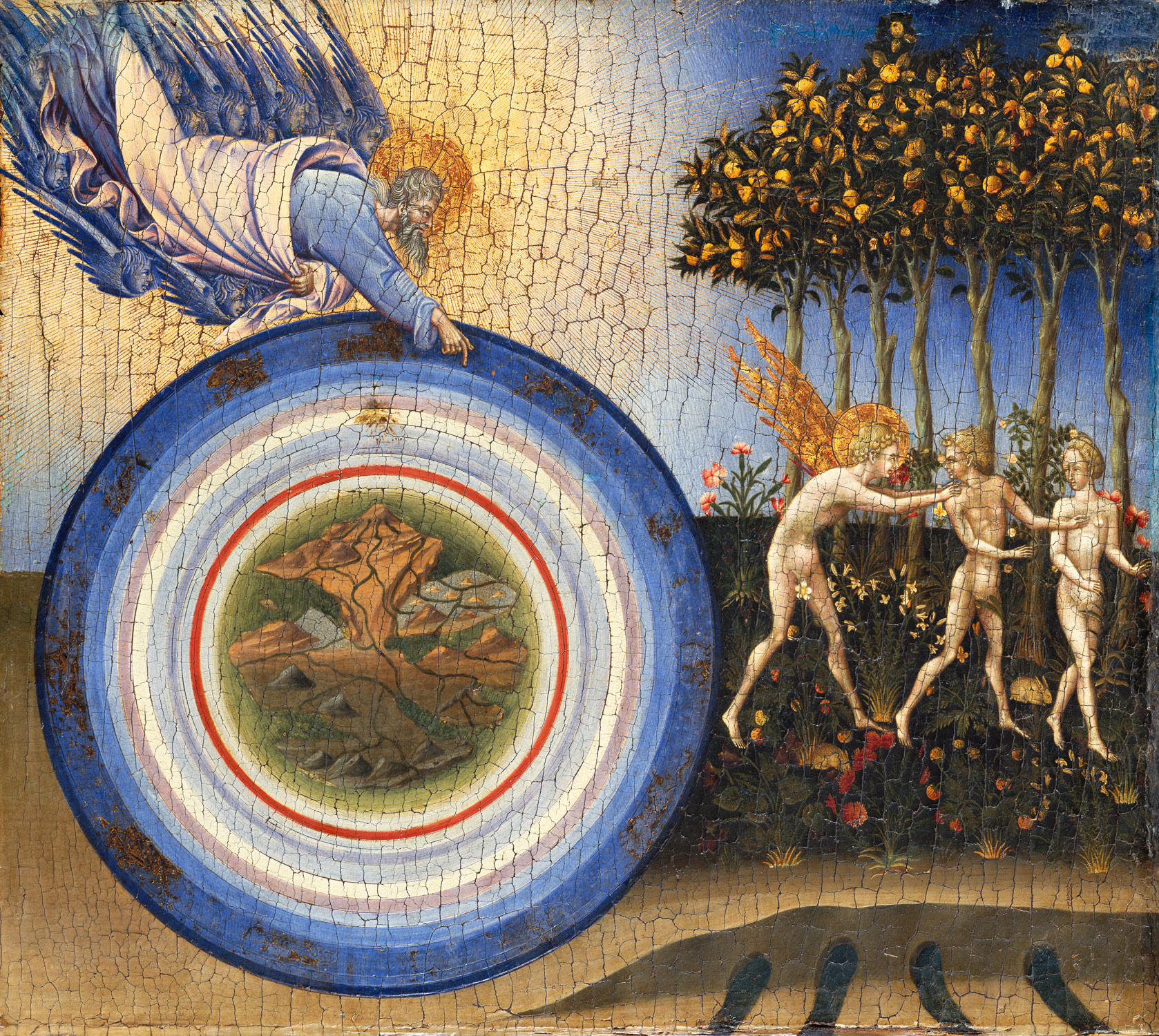This masterpiece of Sienese painting combines Giovanni di Paolo’s exquisite visionary effects and narrative detail. The picture presents a vision of Paradise reminiscent of that described by the great Florentine poet Dante in "The Divine Comedy." The universe is shown as a celestial globe, with the earth at the center surrounded by a series of concentric circles representing first the four elements, the known planets (including the sun, in accordance with medieval and Renaissance cosmology), and finally the constellations of the zodiac. Presiding over the scene of Creation is God the Father, bathed in a glowing celestial light as he is borne aloft by seraphim. Beside the "mappamondo" (map of the world) is the garden of Paradise, its four rivers issuing from the ground at the lower right. The garden's effulgent flora symbolize the pure and sinless state of man before the Fall. A diminutive Adam and Eve are expelled from the garden by a lithe angel whose unusual nakedness and human form may symbolize his deep compassion for the corrupted state of humankind after the fall from grace.
This panel was originally part of the predella (the lowermost horizontal component) of Giovanni di Paolo's "Guelfi Altarpiece," formerly in the Church of San Domenico in Siena (now Galleria degli Uffizi, Florence). It originally joined a representation of Paradise, now in the Metropolitan Museum (06.1046). For a reconstruction of the altarpiece, see http://www.metmuseum.org/collection/the-collection-online/search/436512?rpp=30&pg=1&ft=giovanni+di+paolo&pos=1 (additional images).
.

iBet uBet web content aggregator. Adding the entire web to your favor.
Link to original content: http://www.metmuseum.org/toah/works-of-art/1975.1.31
